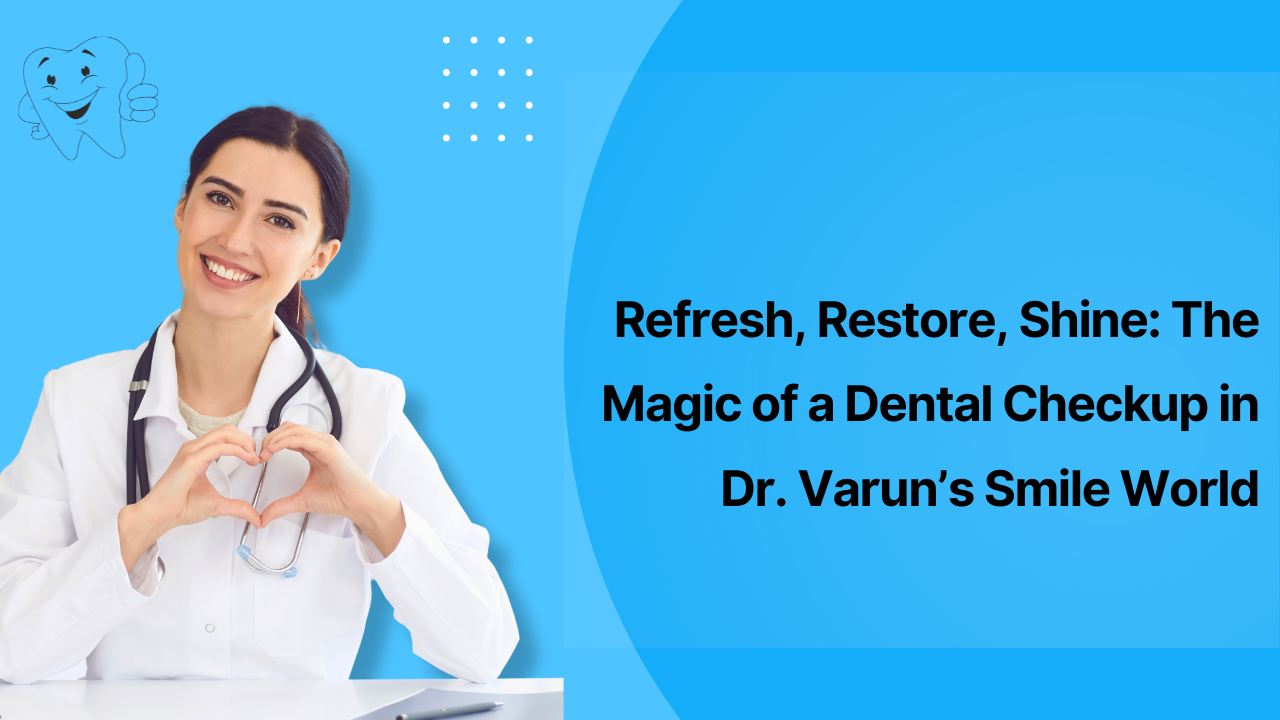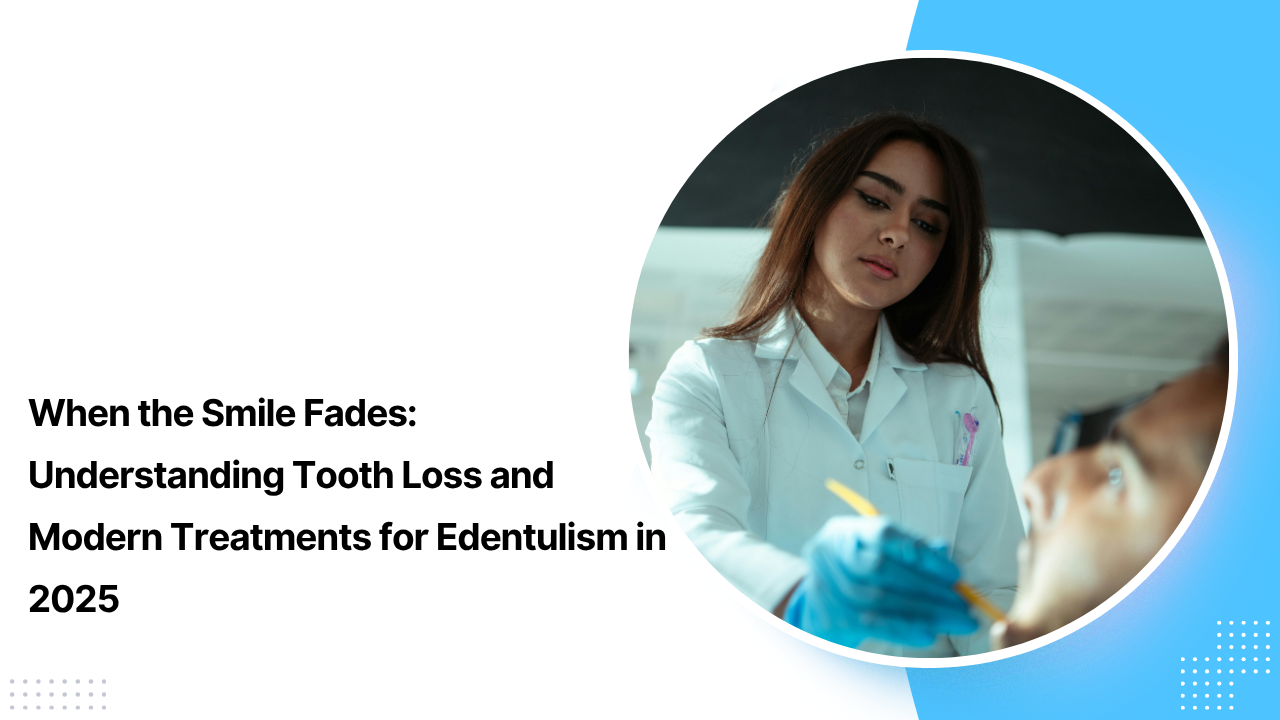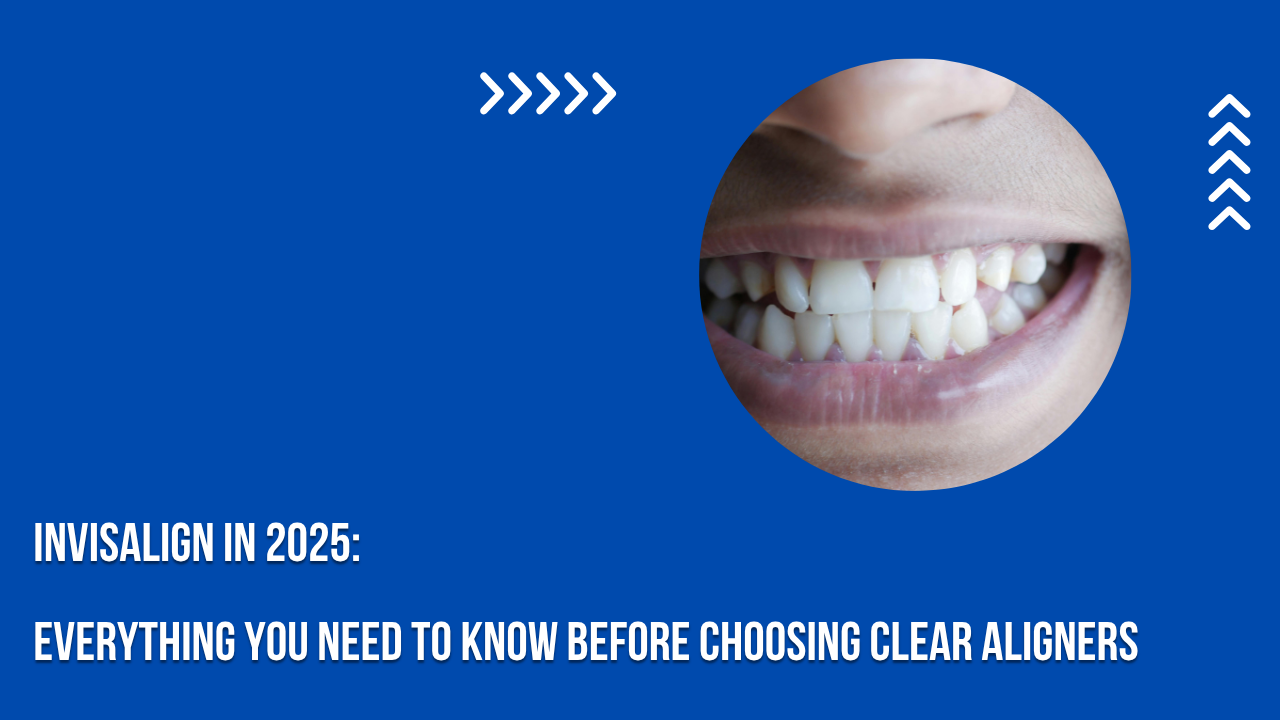When we envision a healthy and confident smile, we typically think of teeth that are straight, white, and whole. However, what occurs when time, injury, or decay affects our teeth? This is where restorative dentistry comes into play—not only to repair damaged teeth but also to restore functionality, maintain structure, and revitalize smiles through a blend of art and science. In 2025, restorative dentistry is experiencing a significant transformation.
With advancements such as AI-assisted diagnostics and biomimetic materials that mimic natural enamel, the field is progressing rapidly. In this blog, we will examine the current state of restorative dentistry, highlight the latest innovations, and discuss its future direction.
What is Restorative Dentistry? A Quick Recap
Restorative dentistry is concerned with identifying, treating, and repairing teeth that have been damaged by cavities, fractures, wear, trauma, or developmental issues. This field encompasses various procedures, such as:
- Fillings
- Crowns and Bridges
- Inlays and Onlays
- Root Canal Therapy
- Dental Implants
- Full Mouth Rehabilitation
The primary aim is to not only repair the damage but also to maintain the natural tooth structure whenever possible, while restoring both function and aesthetics.
Current Trends in Restorative Dentistry (2025)
1. Digital Dentistry is Now Standard Practice
The era of messy impressions and numerous appointments is behind us. Intraoral scanners, 3D printers, and CAD/CAM (Computer-Aided Design/Manufacturing) technologies have become commonplace in restorative dentistry.
– Same-day crowns can be created using chairside milling machines
– Digital impressions provide more precise outcomes
– 3D printed prosthetics offer enhanced accuracy and customization
This transition to digital methods accelerates treatment, enhances patient comfort, and boosts precision.
2. Biomimetic Materials Are Gaining Popularity
Biomimetic dentistry focuses on using materials that imitate the natural structure and function of tooth tissue. Rather than just applying a hard filling, dentists now utilize materials that reflect the way enamel and dentin respond to forces, moisture, and temperature.
- Composite resins that have enamel-like flexibility
- Glass ionomers that gradually release fluoride
- Zirconia and lithium disilicate crowns known for their exceptional strength and appearance
These innovative materials prolong the lifespan of restorations and provide a more natural sensation.
3. Minimally Invasive Approaches
Modern patients are seeking more conservative treatment options, and dentists are responding accordingly. The emphasis is on maintaining as much of the natural tooth structure as possible by utilizing:
- Air abrasion instead of traditional drills
- Microdentistry methods for smaller fillings
- Resin infiltration to stop early decay without the need for drilling
This approach is particularly favored by younger patients and those who experience dental anxiety.
4. AI in Diagnosis and Treatment Planning
Artificial intelligence is more than just a trendy term; it is transforming the way dentists diagnose and treat patients. AI-driven software can now:
- Identify micro-cracks or decay in radiographs
- Aid in the design of restorations
- Forecast long-term outcomes through data analysis
These advancements improve accuracy and minimize human error, leading to better long-term results for patients.
Restorative Dentistry Innovations to Watch
Let’s take a closer look at some cutting-edge technologies shaping the field:
| Innovation | Description | Impact on Patients |
| AI Diagnostics | Software that analyzes x-rays and intraoral images | Faster, more accurate diagnosis |
| Smart Materials | Fillings and crowns that adapt to pH or wear | Longer-lasting restorations |
| Laser Dentistry | Precision treatment with minimal discomfort | Less invasive, faster healing |
| Robotic Assistance | Machines that assist in crown prep or implant placement | Higher accuracy, consistency |
| 3D Bioprinting | Printing tissues that mimic gum or dentin structure | Personalized and regenerative solutions |
The Role of Restorative Dentistry in Holistic Oral Health
Restorative treatments do more than just repair teeth; they contribute to overall well-being. If cavities are left untreated, teeth are worn down, or restorations are not properly positioned, it can result in:
- Jaw pain or TMJ issues
- Gum inflammation and periodontal disease
- Speech challenges
- Digestive issues due to inadequate chewing
By restoring the natural function of teeth, dentists assist patients in preserving proper oral mechanics and even their overall health.
Cosmetic + Restorative: A Unified Trend
The distinction between restorative and cosmetic dentistry is becoming less clear. Modern patients seek both practical and visual appeal, resulting in an increasing trend of:
- Tooth-colored composite fillings replacing metal ones
- Custom-colored crowns and veneers
- Smile transformations that include restorative procedures such as implants and bridges
This combination fosters a harmonious smile, where both function and beauty are achieved.
The Future of Restorative Dentistry: What’s Coming Next?
As we look towards 2030 and the future, several revolutionary advancements are on the horizon:
1. Regenerative Dentistry
Imagine if, rather than just fixing damage, your body could regenerate new tooth tissue. Researchers are working on:
- Stem-cell therapies to regrow dentin or pulp
- Biomaterials that encourage natural healing
- Scaffolds and gels that mend fractures and support enamel-like mineral formation
This could potentially eliminate the need for artificial materials altogether.
2. Nano-Dentistry
Nanotechnology enables the development of extremely small materials that can:
- Deliver targeted medications directly within a tooth
- Seal cracks that are not visible to the naked eye
- Prevent bacteria from settling on restorations
These advancements could significantly lower the chances of cavities returning and prolong the durability of fillings and crowns.
3. The Role of Virtual Reality and Augmented Reality in Dentistry
Picture using AR glasses that enable your dentist to visualize the layers of your teeth in real-time or digitally simulate bite alignment. These technologies will enhance treatment by making it:
- More predictable
- Less invasive
- More collaborative (allowing patients to visualize the repairs being made)
4. Sustainable Practices in Dentistry
As sustainability gains importance worldwide, the dental field is shifting towards:
- Biodegradable packaging and instruments
- Non-toxic materials for fillings
- Digital records to minimize paper consumption
- Eco-friendly sterilization techniques
Future restorative dental clinics may aim to be completely waste-free.
Common Procedures in Modern Restorative Dentistry
To give you a practical view, here’s a comparison of conventional vs. modern restorative approaches:
| Procedure | Traditional Method | Modern Approach |
| Fillings | Amalgam (silver) | Tooth-colored composite resin |
| Crowns | Metal/Porcelain fused to metal | Monolithic zirconia, same-day CAD/CAM crowns |
| Implants | Manual surgery | 3D guided implant surgery |
| Root Canals | Manual file systems | Rotary tools, apex locators, AI planning |
| Bridges | Traditional prep of adjacent teeth | Implant-supported bridges or adhesive bridges |
What Patients Expect from Restorative Dentistry Today
Today’s dental patients are knowledgeable, comfortable with technology, and increasingly focused on their health. They have certain expectations, such as:
- Quick, painless treatments
- Restorations that look natural
- Durable solutions
- Openness and participation in treatment planning
- Comfort and digital amenities
Fulfilling these expectations has become essential for the success of any restorative dental practice.
Final Thoughts: A Future Built on Precision, Comfort, and Preservation
Restorative dentistry is undergoing a transformation that is reshaping the overall dental experience. It is shifting towards a more predictive approach rather than a reactive one, offering personalized solutions instead of generic treatments, and focusing on natural materials over artificial ones.
Today, restorative dentistry encompasses a range of advanced options, including minimally invasive composite fillings, zirconia crowns that can be created in just an hour, and dental implants designed with the help of AI. This modern practice beautifully combines functionality, aesthetics, and innovation.
As we advance towards regenerative methods and bioengineered materials, the future of dental restoration appears to be more promising and natural than ever.
At Dr. Varun’s Smile World, we combine advanced restorative methods with a focus on patient care, making sure that every restoration is both aesthetically pleasing and comfortable. Whether you have a damaged tooth or require a complete mouth makeover, we have the most up-to-date tools and materials to rejuvenate your smile.




